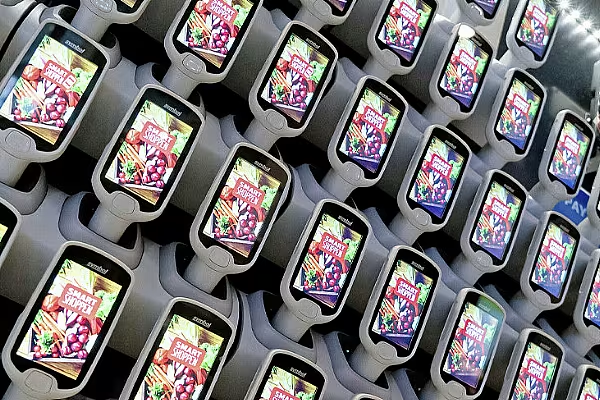Checkpoint Systems, a world leader in source to shopper solutions for the retail sector, has partnered with the ECR Community Shrinkage and On-Shelf Availability Group to explore the impact of self-scan and self-pay technologies (SCO) on retail profits.
The research project, Self-Checkout in Retail: Measuring the Loss, was undertaken by Adrian Beck, Professor Emeritus at the University of Leicester, and provides a comprehensive analysis of the impact self-scan and self-pay technologies (SCO) have on retail profits, as well as highlighting insights on how retailers can minimise the potential risks.
Driving In-Store Innovation
With the retail industry undergoing a digital transformation, many retailers are turning to new technologies to simplify the purchase process for customers and create a seamless in-store experience.
Over the past 15 years, the move towards cashier-less stores, where shoppers can quickly scan and pay for items through an app on a smartphone, has garnered significant interest.
Thanks to these technologies, the customer experience is becoming more interactive and personalised, creating a faster and more independent checkout journey.
The use of SCO systems also provides retailers with significant opportunities to improve store productivity and it is estimated that in the next few years even more ‘self-service’ shops will open.
For example, Amazon is already planning to open 3,000 cashier-less stores worldwide by 2021, similar to those already operating in Seattle and Chicago.
While SCO technologies are shown to enhance the customer experience and offer retailers impressive productivity savings, they may also hurt profitability, as highlighted by ECR’s Self-Checkout in Retail: Measuring the Loss report.
SCO And Retail Loss
Data analysed by the ECR study, from 13 retail companies based in the US and Europe and two suppliers of SCO technologies, revealed a greater use of SCO technologies resulted in higher rates of retail loss.
The research included three types of SCO systems: Fixed (the consumer scans items at a self-service kiosk), Scan and Go (the customer is supplied with a scanning device provided by the retailer) and Mobile Scan and Go (the customer’s mobile device is used as a device for scanning items).
It found that stores, where 55-60% of transactions went through Fixed SCO, saw retail losses increase by 31%, while Scan and Go systems were likely to result in increased losses of up to 18% more than those retailers not using SCO technology.
While the adoption rate for Scan and Go technologies continues to be low, accounting for only 2.82% of all transactions recorded by research participants, the research found that the use of the technology resulted in high levels of customer error.
In fact, the greater the number of products in the shopping cart, the higher the risk of either scanning an item more than once or not scanning an item at all.
The report found that in a shopping cart containing 50 products, there is a 60% chance that there will be at least one error made, while in a shopping cart containing 100 items there is a 9 in 10 chance that the shopper will have made at least one mistake.
Reasons For Retail Loss
According to the ECR, the most likely causes of losses relating to SCO technologies include failure to scan items; erroneous scanning of items (for instance, scanning a kilo of grapes as one kilo of carrots); walking away before completing the payment process; incorrect scanning of promotional or multi-variety products; barcode switching; and coupon frauds.
The extent of the potential loss suggests that there is still much work to be done to ensure SCO technologies are delivering the benefits anticipated by both retailers and technology providers.
This requires a careful assessment of the risks and benefits that may arise from investment, starting with a more realistic and considered review of the potential ROI and measurement of SCO losses.
In addition, retailers need to carefully consider how and where these technologies will be used and develop a coherent organisation-wide strategy that recognises the potential value of a customer-friendly and ‘frictionless' shopping experience.
With careful consideration, retailers can define the approach required to ensure these technologies contribute to business growth and do not become an unacceptable drain on profitability.
Mike French, business unit director at Checkpoint Systems UK, said, "With more than 50 years at the forefront of loss prevention, Checkpoint Systems is committed to actively supporting the development of knowledge in the retail sector. As a key sponsor of the ECR Group, the findings of this report provide interesting reading on the opportunities and challenges facing the adoption of self-scan and self-pay technologies.
"We strongly support the recommendations made in this report and look forward to working with the ECR and the wider retail industry to evolve technology in-store and continue to better the customer experience."
© 2019 European Supermarket Magazine – your source for the latest retail news. Sponsored content. Click subscribe to sign up to ESM: European Supermarket Magazine.














